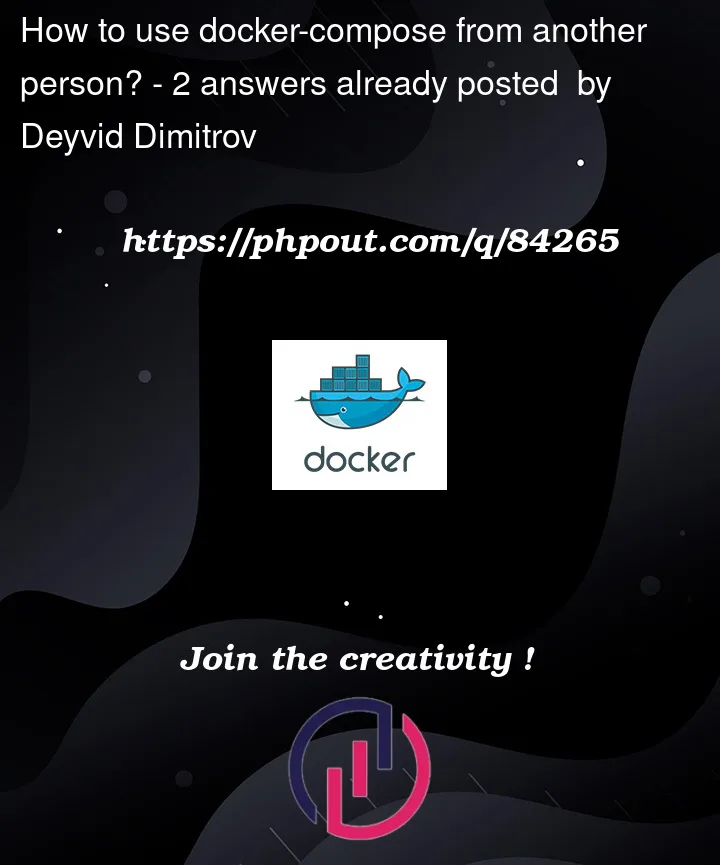I’m pretty new to the world of Docker, so I have the following scenario:
- Spring Boot application which depends to..
- PostgreSQL
and frontend requesting data from them.
The Dockerfile in the Spring Boot app is:
EXPOSE 8080
ARG JAR_FILE=target/*.jar
COPY ${JAR_FILE} app.jar
ENTRYPOINT ["java","-jar","/app.jar"]
And the content of the docker-compose.yaml is:
version: '3'
services:
app:
image: <user>/<repo>
build: .
ports:
- "8080:8080"
container_name: app_test
depends_on:
- db
environment:
- SPRING_DATASOURCE_URL=jdbc:postgresql://db:5432/test
- SPRING_DATASOURCE_USERNAME=test
- SPRING_DATASOURCE_PASSWORD=test
db:
image: 'postgres:13.1-alpine'
restart: always
expose:
- 5432
ports:
- "5433:5432"
container_name: db_test
environment:
- POSTGRES_DB=test
- POSTGRES_USER=test
- POSTGRES_PASSWORD=test
volumes:
- db:/var/lib/postgresql/data
- ./create-tables.sql:/docker-entrypoint-initdb.d/create-tables.sql
- ./fill_tables.sql:/docker-entrypoint-initdb.d/fill_tables.sql
volumes:
db:
driver: local
As far as I understand in order to run the whole thing is required just to type docker-compose up and voila, it works. It pulls the image for the app from the docker-hub repo and same does for the image for the database.
Here comes the thing. I’m working with another guy (front end), whose goal is to make requests to this API. So is it enough for him to just copy-paste this docker-compose.yaml file and write docker-compose up or there is another thing to be done?
How should docker-compose be used in teamwork?
Thanks in advance, if I have to make it more clear leave a comment!




2
Answers
Because of the
build: .keyword in your docker-compose inapiservice, runningdocker-compose upwill search for the backend Dockerfile and build the image. So, your teammate needs to get all the files you wrote.Another solution, which in my point of view is better, would be building the image by you and pushing it to docker.hub, so your teammate can just pull the image from there and run it on his/her system. For this solution, this could be useful.
In case your not familiar with docker hub, read this quick start
Your colleague will need:
docker-compose.ymlfile itselfvolumes:bind mountsbuild:(orbuild: { context: }) lines, if the images aren’t pushed to a registryIf they have the
docker-compose.ymlfile they candocker-compose pullthe images named there, and Docker won’t try to rebuild them.Named volumes are difficult to transfer between systems; see the Docker documentation on saving and restoring volumes. Bind-mounted host directories are easier to transfer, but are much slower on non-Linux hosts. Avoid using volumes for parts of your application code, including the Node library directory or static assets.
For this setup in particular, the one change I might consider making is using the
postgresimage‘s environment variables to create the database, and then use your application’s database migration system to create tables and seed data. This would avoid needing the two.sqlfiles. Beyond that, the only thing they need is thedocker-compose.ymlfile.